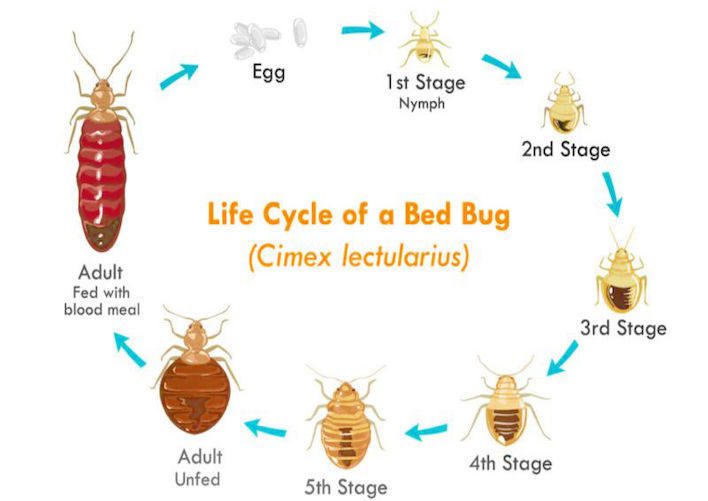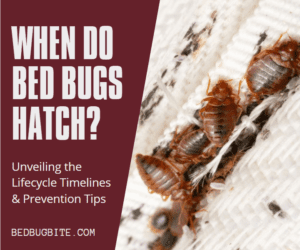Life cycle of bed bug? Bed bugs are creatures of the night, that means they are nocturnal. These tiny reddish-brown insects know how to wreak havoc, and they do so by feeding on humans and furry animals. These wingless flattened insects are stealth and quiet. Their flat bodies allow them to hide in cracks, crevices and other areas quickly. The life cycle of bed bugs is segmented into three parts;
- Eggs
- Nymphs
- Adults
Eggs – Life cycle of bed bug begins
Life cycle of bed bug begins for the bed bug as an egg. The size of a bedbug’s egg is often compared to the size of a pinhead. It is a little bit white in appearance. The female bed bug lays between one and seven eggs per day, and they may end up laying up to 500 eggs in a lifetime. Eggs are laid either in clusters or singly in crevices or cracks. The hatching time of eggs is within two weeks.
Nymphs
When the eggs hatch, they turn into nymphs or young bed bugs. These young bugs will go through five stages of growth before they attain maturity. Feeding starts at the nymph stage. They consume blood for them to grow into the adult stage. With the right amount and availability of blood meal, a nymph can develop into an adult in less than five weeks. Young nymphs are identified by their yellow-white colour, while the older nymph is more reddish-brown.
Adults
Upon attaining maturity, adult bed bugs often feed on a weekly basis
How long do bed bugs live?
The life span of bed bugs is often between four to six months. However, if the environment is cool or cold, bed bugs may live up to ten months in such conditions in the absence of food. Read More…




